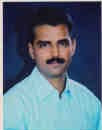What is computer?
Computer is an electronic computing device. It receives raw data as an input, process and generates desired result as an output. If necessary, input and output can be stored in computer's secondary memory for future use.
List and explain the features/characteristics of computers in brief.
Speed
Accuracy
Reliability
Versatility
Diligence and
Programmability
List the applications of computers in brief.
What are input devices? List the most commonly used input devices.
What are output devices? List the most commonly used output devices.
Draw the 'Block Diagram of a Computer' or 'Structure of a Computer' neatly and explain all its parts in brief.
List and explain in brief about 'Types of Computers'.
List and explain in brief about 'Generations of Computers'.
What is computer network? List its advantages.
List and explain the components used for computer network.
List and explain the types of computer networks. (LAN, MAN, WAN).
What is network topology? List and explain the advantages of each topology with neat diagram.
NOTE: Writing answers for following questions in Assignment Book is compulsory.
Write 'STRUCTURE OF C PROGRAM'. Explain all its components with programming example.
What are C-tokens? List and explain in brief.
What is variable? Discuss its declaration and initialization with syntax and examples.
What are formatted I/O functions?List and discuss with syntax and examples.
What is typecast (type conversion)?Discuss different types with examples.
Practice mathematical expression to C expressions.
List and discuss operators supported by C language.
Design and Develop C Programs for following.
To display Hello World message.
To display yours residential address.
To print the message "Press any three keys to know my name" to work accordingly.
To find Square and Cube of a number.
To find area and perimeter of rectangle.
To convert temperature reading from Fahrenheit to Celsius.
To find area and circumference of a circle.
To find area of triangle by reading its breadth and height.
To find area of triangle by reading its 3 sides.
To swap two values using temporary memory.
To swap two values without using temporary memory.
To extract last digit of entered number.
To find simple interest.
Computer is an electronic computing device. It receives raw data as an input, process and generates desired result as an output. If necessary, input and output can be stored in computer's secondary memory for future use.
List and explain the features/characteristics of computers in brief.
Speed
Accuracy
Reliability
Versatility
Diligence and
Programmability
List the applications of computers in brief.
What are input devices? List the most commonly used input devices.
What are output devices? List the most commonly used output devices.
Draw the 'Block Diagram of a Computer' or 'Structure of a Computer' neatly and explain all its parts in brief.
List and explain in brief about 'Types of Computers'.
List and explain in brief about 'Generations of Computers'.
What is computer network? List its advantages.
List and explain the components used for computer network.
List and explain the types of computer networks. (LAN, MAN, WAN).
What is network topology? List and explain the advantages of each topology with neat diagram.
NOTE: Writing answers for following questions in Assignment Book is compulsory.
Write 'STRUCTURE OF C PROGRAM'. Explain all its components with programming example.
What are C-tokens? List and explain in brief.
What is variable? Discuss its declaration and initialization with syntax and examples.
What are formatted I/O functions?List and discuss with syntax and examples.
What is typecast (type conversion)?Discuss different types with examples.
Practice mathematical expression to C expressions.
List and discuss operators supported by C language.
Design and Develop C Programs for following.
To display Hello World message.
To display yours residential address.
To print the message "Press any three keys to know my name" to work accordingly.
To find Square and Cube of a number.
To find area and perimeter of rectangle.
To convert temperature reading from Fahrenheit to Celsius.
To find area and circumference of a circle.
To find area of triangle by reading its breadth and height.
To find area of triangle by reading its 3 sides.
To swap two values using temporary memory.
To swap two values without using temporary memory.
To extract last digit of entered number.
To find simple interest.

